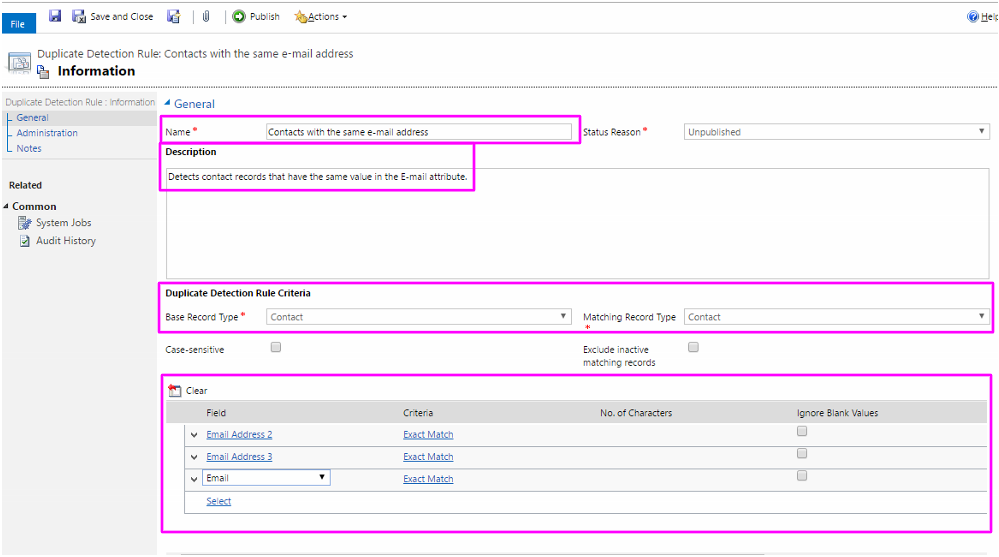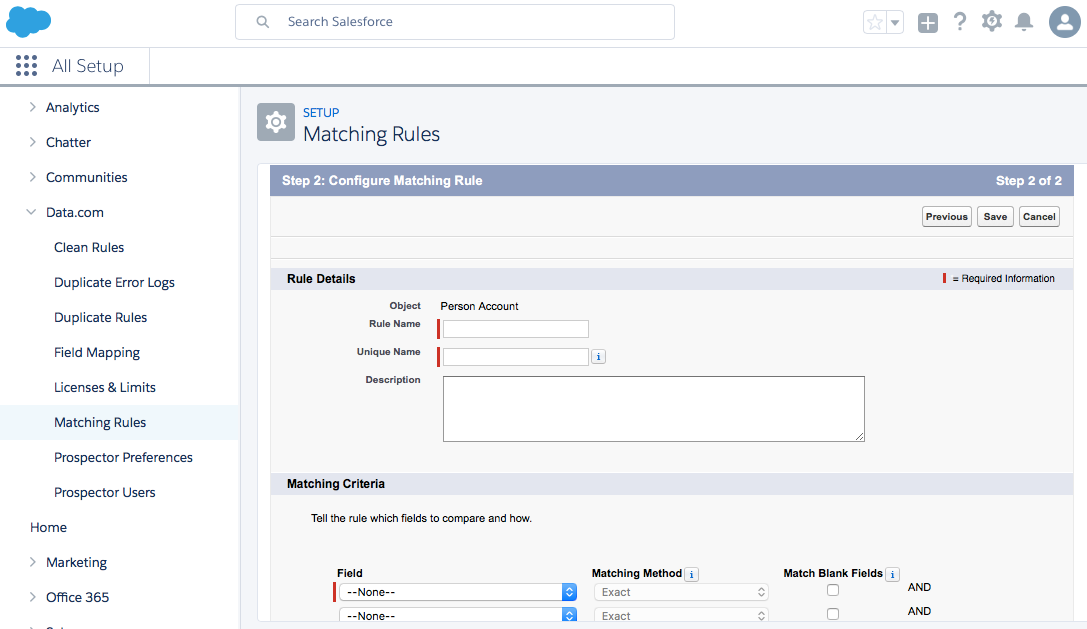
We’ve over-relied on traditional hiring positives like grades expected or universities attended. Historically as a sector, we have employed a very narrow approach to our hiring.

Not every employee needs to be an Ivy League grad!įinally, we need to improve diversity within our sector, and allow more people from different backgrounds to enter, progress, and stay within tech, if we have any hope of bringing in new talent at the scale we need to solve the skills gap.Ĭlosing the skills gap with strategic diversity initiatives First and foremost, we need to shrink our attrition rates as a sector, which means reducing things like employee dissatisfaction, burnout, and start placing a high value on employee wellbeing.Īt the same time, organizations need to rely less on traditional hiring methods and accept more candidates from non-traditional career paths. To do this, you have to work the problem from both ends.
#DUPLICATE DETECTOR SALESFORCE SOFTWARE#
It will take a concerted effort from individual organizations, software providers such Salesforce, and talent creation companies such as ourselves. The first thing you have to realize is no one company or organization can do this alone. And, according to Airswift, the US talent crunch is currently at a 10 year high, which could cost up to $162 billion if unresolved.Īs a talent creation organization that specializes in creating net new Salesforce and AWS talent, we believe there are measures that can be taken to help prevent the impact of the growing skills gap, and even start to close it. The Deloitte and the Manufacturing Institute’s Skills Gap Study cautioned of economic output losses in the US of up to $454 billion by 2028 if the skills gap is not closed.

Of course, the consequences of the skills gap going unfilled are already well documented. Businesses of all sizes, not just the small ones, will struggle to afford the people they need to help them thrive.

As far back as 2018 tech already had the highest turnover rates of any industry, at a staggering 13.2%, so anything that looks to grow that number is a real problem.Īs the tech skills gap grows, and experienced but overworked employees leave the sector, the war for talent will get much worse. These new statistics should be of great concern for our sector, particularly for Salesforce stakeholders. But, without intervention, the added pressure on existing employees may result in increased burnout and growing attrition rates. The boom in demand for tech has seen many companies prosper ( 41% of companies were hiring new IT staff during the pandemic, with a further 62% planning to add more before 2022). It also shows how the number of employees who had never worked outside of their contracted hours is shrinking quickly, going from 10.5% prior to the pandemic, to just 7.28% post-pandemic. Post-pandemic, this number has rapidly grown to 42%. The data shows that, prior to the pandemic, only 27% of professionals regularly worked outside of their contracted hours. So what should organisations be doing to address this alarming trend, head on? Recent research from the 2021 Mason Frank Salesforce Salary Survey shows that the acceleration of digital transformation triggered by COVID-19 is putting increased pressure on workers, creating the perfect conditions for employee burnout and mass exodus from the workforce. Nabila was recognised in Management Today’s 35 Women Under 35 List 2019, and most recently in Computer Weekly’s Most Influential Women in UK Tech.

She is passionate about creating talent and plays an active role in encouraging, supporting and promoting diversity in the workplace.
#DUPLICATE DETECTOR SALESFORCE PROFESSIONAL#
With over 15 years of experience in professional services, tech recruitment and marketing in the UK and USA, Nabila was the first and youngest female to be appointed to VP at the FTSE 250 company she used to work for. Nabila Salem is on the Board of Tenth Revolution Group, and as President of Revolent Group is responsible for leading on the creation of talent, specialising in Salesforce and AWS.


 0 kommentar(er)
0 kommentar(er)
